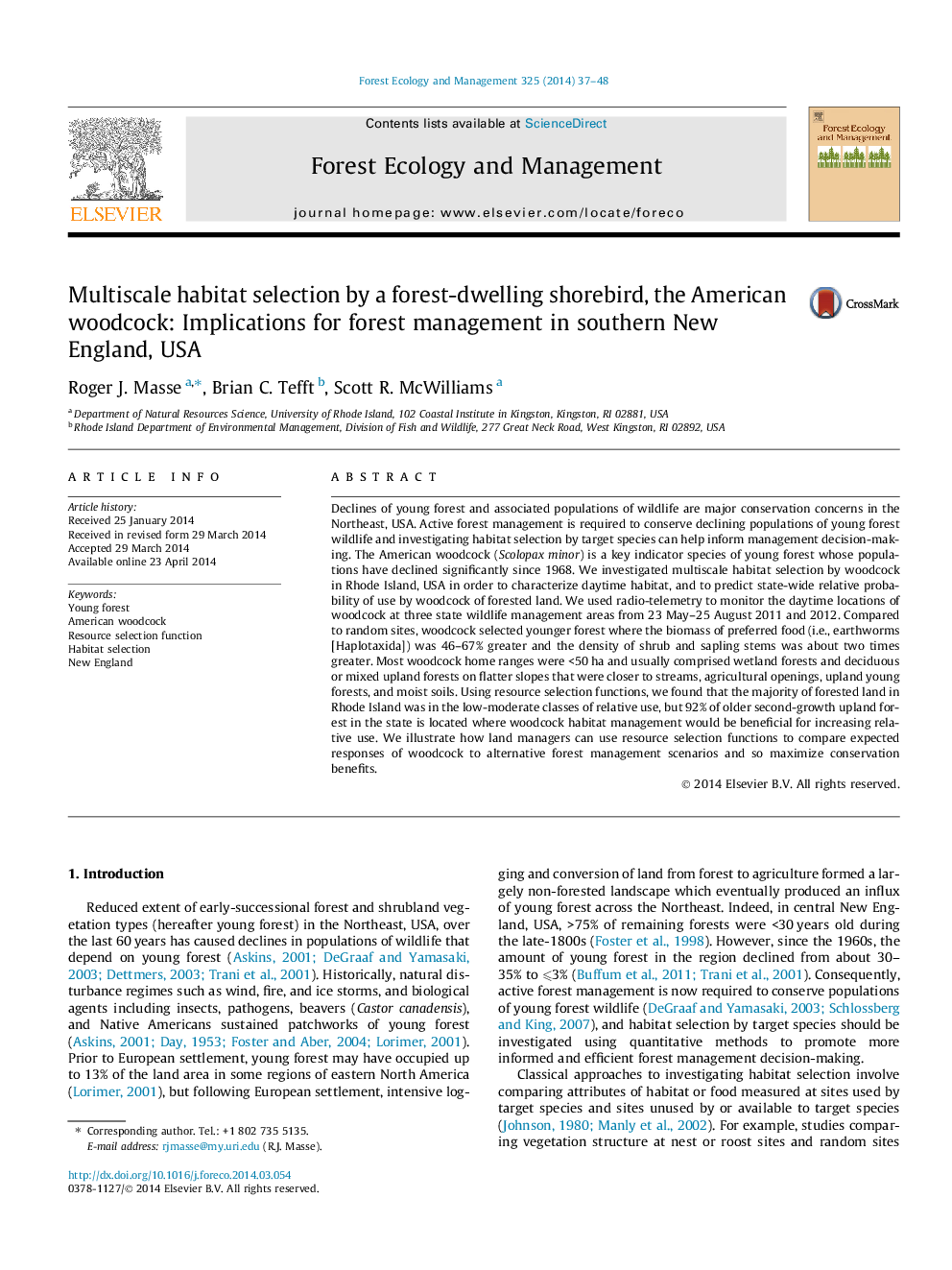| کد مقاله | کد نشریه | سال انتشار | مقاله انگلیسی | نسخه تمام متن |
|---|---|---|---|---|
| 86541 | 159195 | 2014 | 12 صفحه PDF | دانلود رایگان |
• Woodcock select wetland forests and deciduous or mixed upland forests.
• Most home ranges are <50 ha and areas of concentrated activity are generally <4 ha.
• Selected sites have younger trees, abundant food, and are near key landscape features.
• Forest management for woodcock should occur within 1.5 km of key landscape features.
Declines of young forest and associated populations of wildlife are major conservation concerns in the Northeast, USA. Active forest management is required to conserve declining populations of young forest wildlife and investigating habitat selection by target species can help inform management decision-making. The American woodcock (Scolopax minor) is a key indicator species of young forest whose populations have declined significantly since 1968. We investigated multiscale habitat selection by woodcock in Rhode Island, USA in order to characterize daytime habitat, and to predict state-wide relative probability of use by woodcock of forested land. We used radio-telemetry to monitor the daytime locations of woodcock at three state wildlife management areas from 23 May–25 August 2011 and 2012. Compared to random sites, woodcock selected younger forest where the biomass of preferred food (i.e., earthworms [Haplotaxida]) was 46–67% greater and the density of shrub and sapling stems was about two times greater. Most woodcock home ranges were <50 ha and usually comprised wetland forests and deciduous or mixed upland forests on flatter slopes that were closer to streams, agricultural openings, upland young forests, and moist soils. Using resource selection functions, we found that the majority of forested land in Rhode Island was in the low-moderate classes of relative use, but 92% of older second-growth upland forest in the state is located where woodcock habitat management would be beneficial for increasing relative use. We illustrate how land managers can use resource selection functions to compare expected responses of woodcock to alternative forest management scenarios and so maximize conservation benefits.
Journal: Forest Ecology and Management - Volume 325, 1 August 2014, Pages 37–48
